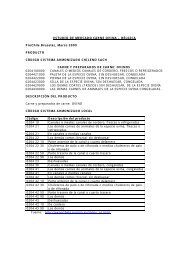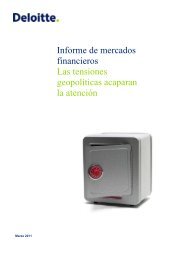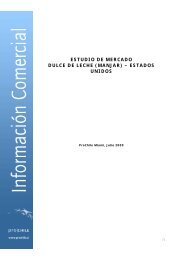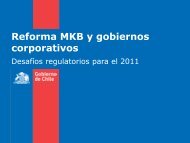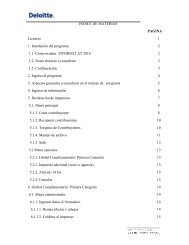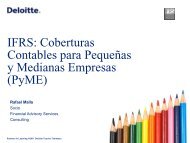Tax Advisers - Deloitte
Tax Advisers - Deloitte
Tax Advisers - Deloitte
Create successful ePaper yourself
Turn your PDF publications into a flip-book with our unique Google optimized e-Paper software.
New Zealand<br />
The new tax paradigm... beat<br />
the rate<br />
Teresa Farac<br />
<strong>Deloitte</strong><br />
Auckland<br />
Thomas Pippos<br />
<strong>Deloitte</strong><br />
Wellington<br />
New Zealand’s tax regime has been predicated on being fair<br />
and free from distortions. To minimize those distortions<br />
regarding the taxation of foreign portfolio investment (FPI),<br />
a new tax regime, known as the Fair Dividend Rate (FDR),<br />
is being introduced. Once it is finally approved by<br />
Parliament, the FDR would be effective from April 1 2007.<br />
Current rules result in material tax distortions for FPI as<br />
between direct and indirect (via a fund) investment, and<br />
between investment in and outside of certain jurisdictions,<br />
known as the grey list. The grey list includes many of New<br />
Zealand’s traditional trading partners that have a robust tax<br />
base, including Australia, Canada, Germany, Japan, Norway,<br />
the UK and the US. Within a grey list jurisdiction, FPI is<br />
generally taxed only on dividends.<br />
Outside the grey list jurisdictions, FPI is generally taxed on<br />
an unrealised mark-to-market basis, which goes further than<br />
clawing back any tax preferences that may be enjoyed, and is<br />
difficult to reconcile with the general premise of no capital<br />
gains tax. The distortion is compounded in a managed funds<br />
context where, due to their scale and pattern of activity, funds<br />
are generally viewed as holding all investments, including<br />
FPI, on revenue account. The main exclusion is passive<br />
tracking funds.<br />
A simple solution would be to extend the grey list to more<br />
countries with robust tax systems and to remove the<br />
investment bias between direct investment and investment<br />
through funds by taxing funds only on dividend income.<br />
According to the government, however, this would not be fair in that not enough<br />
income would flow back into the tax base.<br />
The main features of the proposed regime include:<br />
• no grey list for FPI;<br />
• FPI, other than investment into Australian tax-resident listed companies, would be<br />
subject to an FDR method;<br />
• Australian FPI not subject to FDR and equity investments in New Zealand would<br />
no longer be treated as being held on revenue account; and<br />
• the initial FDR rate would be 5%. Individuals and family trusts can reduce its<br />
impact in certain cases.<br />
In short, the FDR methodology taxes investors at a flat level of gross income<br />
calculated at 5% of the market value of investments held at the beginning of the tax<br />
year. Nuances include:<br />
• no ability to recognise and carry forward investment losses;<br />
• individuals and family trusts could pay tax at a lower rate if they undertake complex<br />
calculations to establish that their economic income is less than the 5% rate. The<br />
expectation is that for them their effective FDR will be around 3.5%;<br />
• managed funds would need to calculate the 5% gross income on a daily rather than<br />
annual basis; and<br />
• investments without a readily available market value would have notional income<br />
calculated at 5% of the cost, with the cost compounding by 5% annually with<br />
limited options to review to a true market value.<br />
151




